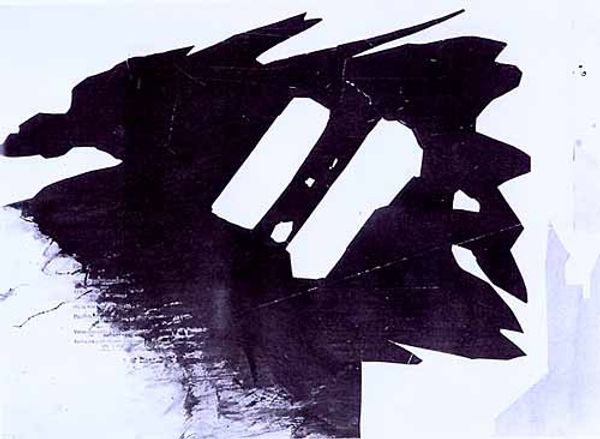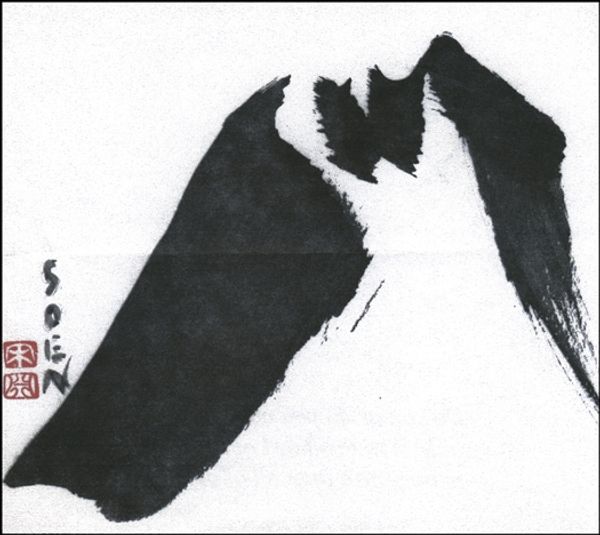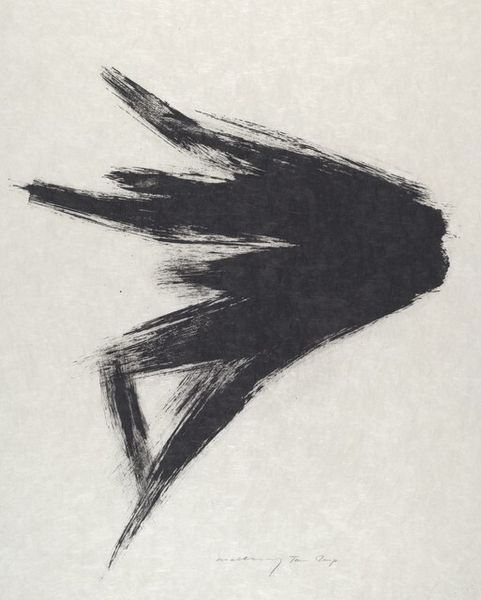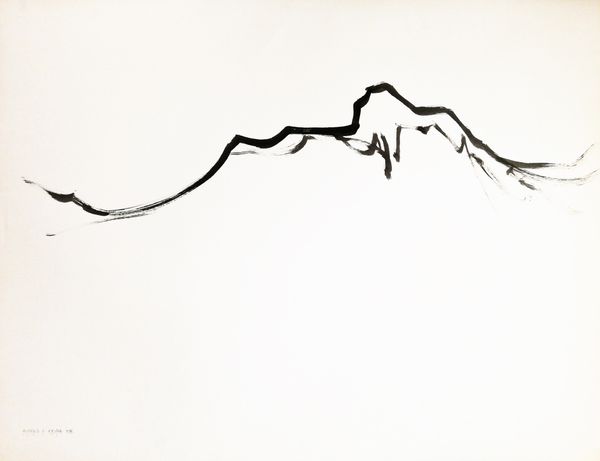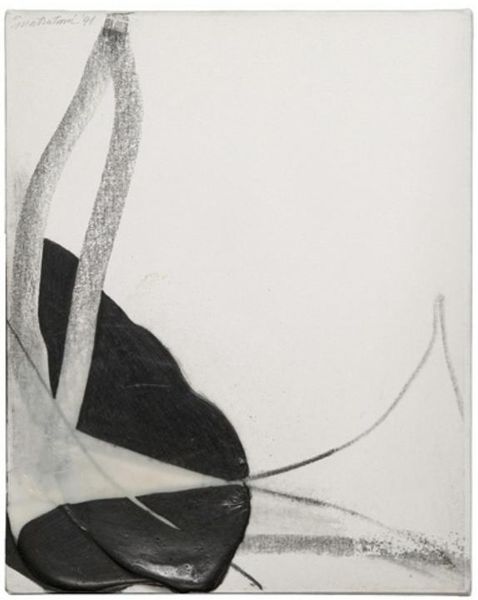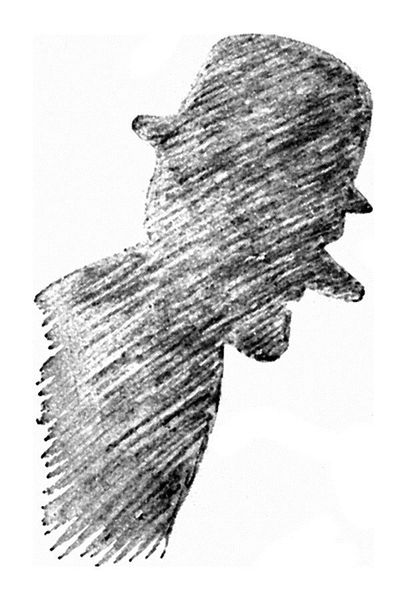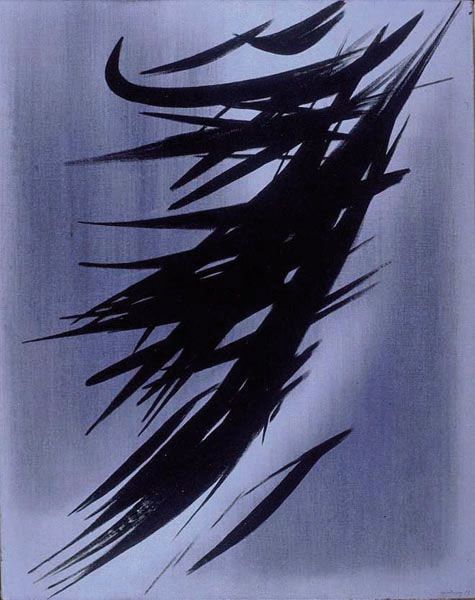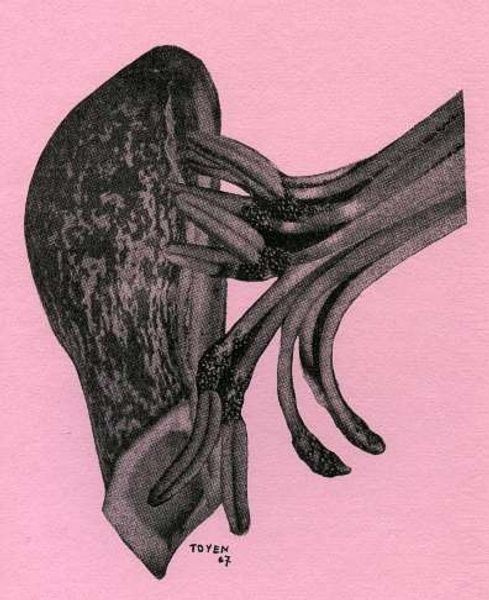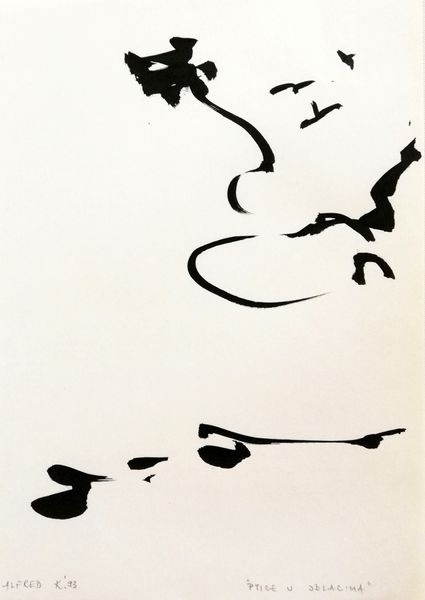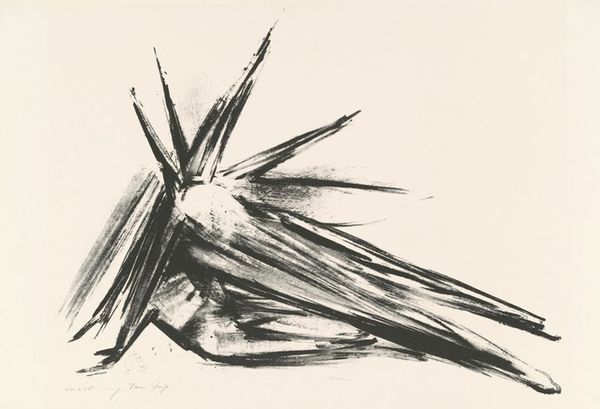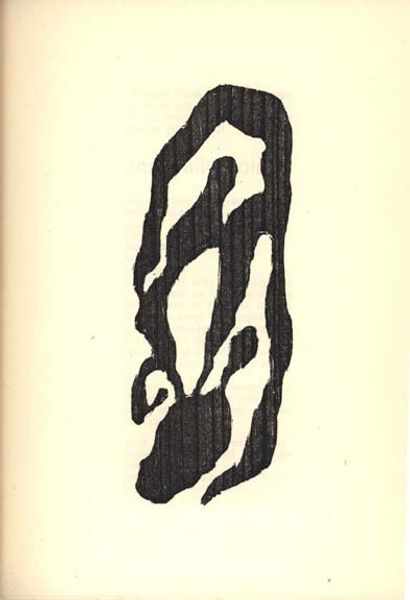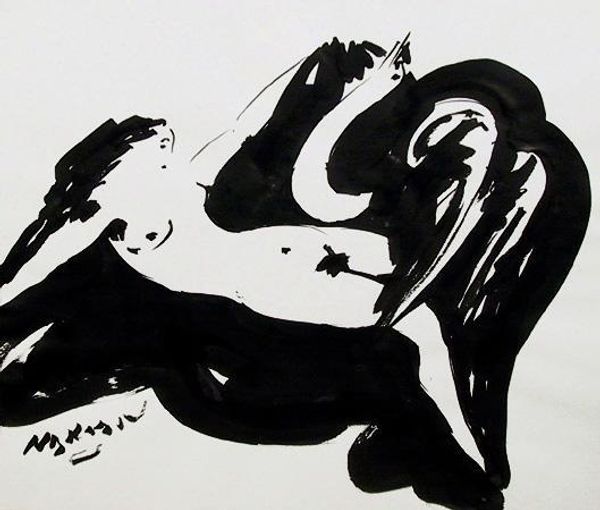
drawing, ink
#
drawing
#
shape in negative space
#
natural shape and form
#
organic
#
thin stroke sketch
#
shading to add clarity
#
minimalism
#
small typography
#
asian-art
#
hand drawn type
#
hand lettering
#
ink
#
limited contrast and shading
#
abstraction
#
line
#
modernism
#
natural form
#
calligraphy
#
small lettering
#
monochrome
Copyright: Kazuaki Tanahashi,Fair Use
Curator: Immediately, the weight of the ink strikes me; a bold, curving form anchors the eye, defying simple interpretation. What do you see? Editor: It is compelling. We’re looking at “Mind/Heart” by Kazuaki Tanahashi, rendered in ink. It seems like a spontaneous gesture, a singular brushstroke, that belies a deeper meditation. Its minimalist aesthetic points to broader discussions about the essentialization of identity and belonging. Curator: You've captured its inherent duality, I feel, but I'm drawn to the symbolism imbued in this image. The calligraphic line work echoes traditional East Asian ink painting, which uses brushstrokes to depict not just form but also the artist's spirit. It feels like the physical manifestation of energy in motion. Editor: Absolutely. Consider how abstract form like this challenges notions of visibility, power, and even historical exclusion. What does a gesture like this communicate in the diaspora? Is it a claiming of space? Or a commentary on loss and displacement? Curator: Fascinating. It brings forth notions of Zen Buddhism and the interplay between presence and absence; think of the way emptiness gives shape to form in artistic interpretation. Also, calligraphy traditionally carries codes of knowledge; here it becomes more emotive, exploring dualities. Editor: And perhaps resisting a purely intellectual understanding of identity. To foreground “heart” with “mind”, disrupts this legacy within activist contexts that resist coloniality. How does embodied experience shape these interpretations? Curator: I agree. I'm convinced we are meant to feel this as much as understand it. By merging intention with intuitive gesture, Tanahashi compels the viewer towards meditative reconciliation. Editor: It reminds us of art's potential for pushing critical boundaries. I find myself reflecting on how such minimalist forms are always sites of radical possibility.
Comments
No comments
Be the first to comment and join the conversation on the ultimate creative platform.

